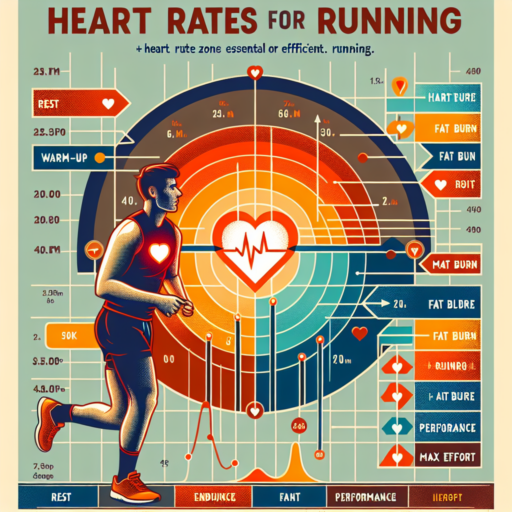How to predict 5K pace?
Understanding and predicting your 5K pace is essential for runners aiming to set personal records or simply achieve a comfortable race day experience. Starting with historical performance data can offer a solid foundation. Examine your recent race times over different distances and use pace calculators available online to adjust these times for a 5K race. This method can highlight your potential 5K speed based on past achievements.
Analyzing your training logs provides another lens through which to gauge your ready pace. Pay special attention to workouts of similar distance or those that include intervals at your target 5K pace. Consistency in these training runs suggests a reliable predictor of your race day performance. Furthermore, tempo runs or time trials leading up to the race can offer acute insights into your current conditioning and readiness.
Physical and mental preparation play a pivotal role in translating predicted pace into actual race times. Ensure your strategy includes nutrition, rest, and a tapering period to optimize performance. Additionally, familiarize yourself with the race course beforehand, as its profile—flat, hilly, or mixed terrain—can significantly affect pace. This preparedness, coupled with a well-thought-out pacing strategy, empowers runners to approach the start line with confidence in their predicted 5K pace.
How to predict 10K pace?
Predicting your 10K pace can be both an exhilarating and a daunting task, especially if you are gearing up for your first race at this distance or looking to set a new personal best. Thankfully, several methods have been developed to help runners estimate their finishing times with a reasonable degree of accuracy. Whether you are a seasoned marathoner or a newcomer to the racing scene, understanding how to predict your 10K pace is crucial in setting realistic goals and crafting a race strategy that works for you.
Use Previous Race Times: One reliable method to predict your 10K pace is to look at your times from previous races. Distances such as 5K can be particularly telling. By doubling your 5K time and adding a slight adjustment for the increased distance (1-2 minutes for most runners), you can get a rough estimate of your 10K pace. This approach assumes consistent training and fitness levels between the races.
Running Calculators: Another efficient tool at your disposal is the plethora of online running calculators. These calculators use various algorithms to predict your 10K pace based on past performances, taking into account the nuances of different race distances. Simply input your recent race time, and the calculator will do the rest, offering an estimated pace per mile or kilometer. Remember, while these tools are useful, they do not consider factors such as race day conditions or your specific training leading up to the race.
Understanding and predicting your 10K pace is not just about numbers; it’s about tailoring your training and race day strategy to meet your goals. While the methods mentioned provide a starting point, listening to your body during training and adjusting expectations based on how you feel leading up to race day are equally important. Balancing these elements can help you cross the finish line with a time that reflects your hard work and dedication.
No se han encontrado productos.
How to calculate LT pace?
Calculating your Lactate Threshold (LT) pace is essential for athletes, especially runners and cyclists, looking to optimize their training and performance. The LT pace indicates the speed at which lactate starts to accumulate in the blood. At this point, exercise intensity has reached a level where lactate clearance is slower than lactate production, signaling the onset of fatigue. Knowing your LT pace can help tailor your training to improve endurance and speed.
Understanding LT Pace
The concept of LT pace is rooted in the balance between lactate production and clearance in your body. When exercising at or below your LT pace, your body can effectively manage and clear lactate, which is a by-product of glucose metabolism under anaerobic conditions. However, exceeding this pace leads to an accumulation of lactate and hydrogen ions, affecting muscle function and causing fatigue. Thus, calculating your LT pace allows you to train more efficiently by staying within a beneficial intensity range.
Methods to Determine Your LT Pace
There are several methods to calculate your LT pace. The most accurate ones involve laboratory tests where blood samples are taken at regular intervals during a workout to measure the lactate concentration. However, for most athletes, practical field tests provide a good approximation. One popular field test is to run or cycle at a steady, hard pace for 30 minutes and take the average pace of the last 20 minutes. This pace is typically a good representation of your LT pace. Alternatively, certain wearable fitness devices estimate LT pace by assessing heart rate variability and other physiological markers during exercise.
Remember, your LT pace is not static and can improve with targeted training and conditioning. Regularly testing and adjusting your training based on your current LT pace is crucial for long-term improvement and achieving your athletic goals.
What is pace calculated in?
Pace, an essential metric for runners, cyclists, and athletes alike, is primarily calculated in minutes per mile or minutes per kilometer. This measurement helps individuals gauge their speed over a specified distance, making it a crucial element for training and performance improvement.
In the world of running, understanding your pace can be a game-changer. It not only provides insights into your current level of fitness but also enables you to set realistic training goals. Whether you are preparing for a 5k run, a marathon, or simply looking to improve your personal health, knowing how to calculate your pace is fundamental.
While minutes per mile and minutes per kilometer are the most common, athletes around the globe might encounter variations based on the sport or the metric system used in their region. Therefore, becoming acquainted with both measurements ensures a comprehensive understanding of pace, no matter the context.




